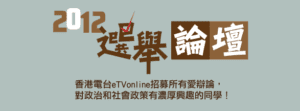Hong Kong has experienced more than 100 years of British colonial rule until it returned to China in 1997. In a society where more than 90% of the whole are Chinese, when it comes to “identity”, the two identities that cannot be separated must be “Hong Kong people”. ” or “Chinese”. Scholar Liu Zhaojia mentioned in the article “”Hong Kong people” or “Chinese”: the identity of Hong Kong Chinese 1985-1995″: “Hong Kong Chinese generally use the terms “Hong Kong people” and “Chinese” to refer to Calling oneself… ‘Hong Kong people’ and ‘Chinese’ are the two identities that Hong Kong Chinese feel the most meaningful.”
People living in Hong Kong have different perceptions of their “identity” at different times, especially before and after the return to China in 1997. In the polls, in addition to the choice of “Chinese” and “Hong Kong people”, There are even two mixed identities of “Chinese in Hong Kong” and “Hong Kong in China”. What are the reasons for this special situation?
Until the recent “China-Hong Kong conflict incident”, the issue of “identity” of Hong Kong people has once again been discussed in society. The following are some of the incidents:
Controversy between complex and simplified (December 2011 – April 2012)
The warning signs erected by the police in some parts of the New Territories only use simplified Chinese, some chain clothing stores completely replace traditional Chinese with simplified Chinese, and a coffee shop in Tseung Kwan O uses only English and simplified Chinese menus, causing controversy on the Internet and in newspapers, cultural commentator Chen Yun repeatedly criticized the article, and Fan Guowei, a member of Saigon District, even launched protests.
Hong Kong University Poll Storm (December 2011)
The University of Hong Kong’s Public Opinion Research Project conducted a telephone interview in mid-December last year on citizens’ opinions on “Hong Kong people”, “Chinese people”, “Chinese people in Hong Kong”, “Hong Kong people in China”, “National identity of the People’s Republic of China”, “Chinese people” a sense of identity, such as being a part of the nation,” “Asian identity,” and “world citizenship.” The poll was conducted in August 1997 and conducted 47 times by December 2011. The results released show that Hong Kong citizens most identify with the identity of “Hong Kong people”, with only 16.6% of them willing to call themselves “Chinese”, a 12-year low.
Hao Tiechuan, head of the Publicity, Culture and Sports Department of the Liaison Office of the CPC Central Committee, named and criticized the results of the poll, saying that the design of the poll pitted “Chinese” and “Hong Kong people”, which was “unscientific” and “illogical.” Hong Kong is not an independent political entity, it is not a Chinese, which country is it from?” He even suggested that Director Chung Tingyao should change the interviewee’s views on “Chinese” and “Chinese”. British” identity.
D&G; Storm (January 2012)
The Canton Road branch in Tsim Sha Tsui of the international brand Dolce & Gabbana does not allow local Hong Kong citizens to take pictures outside the store, but only allows mainland tourists to take pictures. Afterwards, they refused to apologize, which caused social controversy and caused some Hong Kong people to hate mainland tourists.
More than 11,000 people responded to the “D&G Doorway 10,000-person photo campaign” launched by the social networking site Facebook.
After the incident, nearly 100 passers-by continued to crowd the streets, some stopped at the shop windows, took pictures with mobile phones or cameras frantically to declare “sovereignty”, and even held high cards against dominance. Many people deliberately took pictures outside the shop to “record” the incident. .
D&G; Public Relations Department issued a statement on the incident, emphasizing that D&G; attaches great importance to the Asian market, and all controversial statements reported by the media are not from the employees of the company. Finally, it is emphasized that there is absolutely no intention to offend any Hong Kong citizens.
Subway car noodles incident (January 2012)
A short video on the Internet shows that in a Hong Kong subway car, a man scolded a girl from China for not eating on the subway, which caused the girl’s mother and female friends to be dissatisfied and then cursed. The man then pressed the emergency stop button and asked the subway staff to drive the girl and others off the bus and issue a penalty, which caused strong dissatisfaction from the other party.
Kong Qingdong scolded Hong Kong people as dogs (January 2012)
Kong Qingdong, a professor of Peking University’s Department of Chinese, in the mainland’s first video news network program “Kong Monk has something to say”, regarding the above-mentioned incident of eating noodles in the subway car, scolding Hong Kong people as dogs of the British colonists and bastards who do not speak Mandarin, “One word, Bitchy”, “Fucking sucks”, “Many Hong Kong people are dogs”, etc. His wild remarks made Hong Kong people question the fact that Peking University has produced such a high-quality professor, causing Hong Kong people to roar, and some netizens even launched an action of 10,000 people to block the Liaison Office of the Central Committee and ask him to apologize to Hong Kong people.
Elements of Identity
The construction of “identity” can be roughly composed of four elements: ethnic identity, cultural identity, legal identity and
geographic identity.
Ethnic identity
Based on biological inheritance, a sense of ethnic identity stems from a shared ancestral group. Members have similar genetic characteristics due to the reduction of various differences through long-term biological admixture. The members of ethnic groups that are related by blood will form common and permanent characteristics, such as language or long-standing cultural habits, through the reproduction of generations.
Cultural identity
It is based on a sense of identification with various values within the same community. Most cultural identities are interrelated with racial identities formed by blood ties, and are passed down from generation to generation in the family. However, through formal education, long-term living in a foreign society, etc., assimilation of values may also occur, thereby changing an individual’s cultural identity. However, due to cultural contact, understanding, and even changes between different communities in society, barriers can be eliminated, and cultural identities can be integrated.
Legal identity
It is through the law that a person’s citizenship is determined based on objective criteria, the most important of which is “legal status”. For example, if we hold a passport from the Hong Kong Special Administrative Region of the People’s Republic of China, we are both Hong Kong citizens and Chinese citizens.
Geographic identity
Scholar Anderson found in his “Imagined Communities” study that the use of population surveys to define race, maps to define racial boundaries, and museums to build a sense of race history and collective memory, the purpose of these three means is to Create the legitimacy of domination. A community living on the same land produces so-called geographic identity, which is divided by land boundaries. What is involved is the limit that the state can reach in the exercise of its dominance, and it is also the balance of power between the state and the state.
What factors have influenced the change in Hong Kong people’s “identity”?
Hong Kong is a part of Chinese territory and was once governed by a British colony. In this special historical background and in different periods, the British Hong Kong government, mainland Chinese and local people in Hong Kong all played important roles, influencing the construction of Hong Kong people. identity” process.
Beginning in 1842, the long-term British colonial rule in Hong Kong resulted in the collective identity of Hong Kong citizens based on Hong Kong’s colonial boundaries and rule. The British government’s governance of the Southeast Asian colonies is to preserve the local culture and traditions as much as possible, so the policy towards Hong Kong is no exception. As a place where more than 90% of the population is Chinese, most of the Chinese culture is guaranteed, such as polygamy, and the tradition that men can have concubines was officially abolished in 1972. The British government’s non-interventionism in Hong Kong’s local society has strengthened the development of Hong Kong’s local independent identity. However, some people think that the British colonial rule has made Hong Kong people’s identity ambiguous. With the development of the economy, education, media and government policies, etc., the Chinese in Hong Kong have developed dual identities of “submissive people” and “descendants of Yan and Huang” under colonial rule. However, the colonial regime, after all, followed the political culture of Europe and paid more attention to the rule of law and human rights, which was different from the Chinese tradition in mainland China. Although it was a government with limited powers, it played an important role in the process of identity recognition. In the 1970s and 1980s, after several riots in Hong Kong, the British Hong Kong government learned from experience and lessons, listened to the demands of the people, responded to the opinions of the people, implemented looser policies in politics, and attracted Chinese elites to discuss politics. It was established within the Urban Council. Elected seats, develop the economy to improve people’s livelihood, and at the same time develop social welfare, launch public housing, free education, public medical care, infrastructure and transportation, etc., which make Hong Kong Chinese feel proud of economic development and social construction, and indirectly strengthen the local community. Awareness of identity.
Refugee mentality
The vast majority of Hong Kong citizens are immigrants from mainland China. The population of Hong Kong after the war was about 500,000, jumped to 1.8 million in 1947, and by 1953, the population had risen to 2.5 million. In just 8 years, the population has increased by 2 million. Four out of every five people at that time were refugees during that period. According to statistics, in 1961, the population of Hong Kong was 3,168,100, of which 50.5% were born in Mainland China, 47.7% were born in Hong Kong and 1.8% were born elsewhere, that is, more than half of the population at that time were immigrants (52.3%).
Since the purpose of mainland refugees living in Hong Kong is to escape political persecution and turmoil, or to seek opportunities for economic development, most people do not regard Hong Kong as a place to “take root”, so in terms of identity, they are still Chinese Or the origin or place of birth is the main factor, the mentality of refugees still has a great influence, and the common blood and ethnicity makes the identity of “Chinese” naturally become the collective identity of Hong Kong people in this period.
Cross-strait situation
After 1949, the continuous separation and confrontation between the two sides of the Taiwan Strait also affected the identity of Hong Kong citizens as “Chinese”. Many mainland refugees came to Hong Kong because they did not agree with the new regime established by the Communist Party, or escaped its political struggle and persecution. There is also a strong sentiment against the Chinese Communist regime in Hong Kong. This sentiment has naturally become the identity of the Chinese in Hong Kong. a core part.
Awareness of Nativism vs Closed Economy of the Mainland
Post-war Hong Kong was rapidly integrated with the world capitalist economy, with rising living standards and the constant influence of Westernization, coupled with the gradual establishment of a sense of freedom and human rights and the rule of law, China after 1949 was still an inward-looking and closed-off. The society, until the reform and opening up in 1979, was under the rule of Mao-style socialism and isolationism, resulting in chronic poverty and backwardness. The strong contrast between the two has further accelerated the formation of Hong Kong’s local identity with liberalism, individualism and utilitarianism as its connotations.
Cantonese as native language
Hong Kong Chinese generally speak Cantonese, and based on this, a unique popular culture has been established, and this special local culture has invisibly shaped the identity of Hong Kong Chinese.
Social riot
The right-wing riots in 1956, the left-wing riots in 1967, and the Cultural Revolution-style struggle made Hong Kong citizens fear politics, become indifferent to domestic politics or move towards political neutrality, and began to construct their own identity as “Hong Kong people” .
Sharing the fruits of economic development
After the 1960s and 1970s, the Chinese in Hong Kong began to enjoy the fruits of economic development due to their personal hard work and perseverance. At the same time, the compatriots in the mainland lived in poverty, so the mentality of the Chinese in Hong Kong gradually diminished. The identity of “Hong Kong people” is also from alienation to acceptance and identification.
Student movement in search of identity
The French student movement as early as 1968 and the later anti-Vietnam War movement awakened the tertiary students and intellectuals in Hong Kong, making them devote themselves to social movements and pay attention to the disadvantaged groups in society. Therefore, the student movement in the 1960s and 1970s was described as an identity search with an anti-colonial consciousness. The college students at that time participated in a social movement with a sense of identity, the road of the student movement called “Recognize Guan Zheng”. The so-called “relaxation, recognition and clearance” is a general term for “looking at the world, understanding the motherland, caring for the society, and striving for rights and interests”. Movements such as “Strive for Chinese as the Official Language” in 1968 and “Defend Diaoyutai” in 1971 brought up the issue of identity consciousness. Anti-colonial consciousness is to find identity. At that time, during the Cultural Revolution in the mainland, the policy of “walking on two legs” was emphasized, which made them feel “Chinese” proud. However, with the fall of the Gang of Four in 1976, college students became disillusioned with the ideal of the socialist motherland, and their identity returned from the “motherland” to “Hong Kong”. This situation stimulated the awareness of “Hong Kong people”, and citizens began to care about their own society and people’s livelihood. affairs, economic life, etc.
After the 1970s, Hong Kong people’s changing status of “identity”
Native generation
People who grew up in the 1970s are the most typical “Hong Kong people”. Because they were born, raised and worked here, witnessing all the changes in Hong Kong’s prosperous era. This generation has common growth experiences, such as being educated in schools, lingering on the golf course in housing estates, watching free TV entertainment at home, etc. They are similar in all aspects of life, work, entertainment and leisure. Self-identity has a direct impact.
Moreover, they have no understanding of China from their parents’ generation, plus negative descriptions, such as the rustic “A Can” and “Cousin” in the TV series, and the fierce and brutal “Banner” and “Big Circle” in the movie, etc. role, strengthening their resistance to China.
Therefore, in terms of identity, this generation identifies itself as “Hong Kong people” rather than “Chinese”.
Spirit under the Lion Rock
In the society of the 1970s, Hong Kong’s economic development and more contacts with the rest of the world gave rise to a sense of local identity. Cultural creations at this time provided the basis for social values. For example, “Under the Lion Rock”, a classic TV series created in the 1970s, created the “Spirit of Under the Lion Rock”, which was the life belief of Hong Kong citizens at that time, and it was also part of this generation. The cultural values of people have made them proud enough to be Hong Kong people. The spirit of “Under the Lion Rock” is the concrete manifestation of identity consciousness.
Social abundance
In the 1970s, Hong Kong’s economy took off, and people’s lives were substantially improved. Coupled with the development of culture and art, the essence of Hong Kong’s local culture was formed. The identity of “Hong Kong people” was the construction of social values and life culture during this period. Especially after the stock market crash in 1973, the newly emerging middle class held the value that “hard work can improve life”, which further strengthened the identity consciousness of “Hong Kong people”.
Before and after the return of 1997, it was a historic turning point for Hong Kong, which meant a change in Hong Kong’s political status. Hong Kong had returned from a colony under the British administration to a special administrative region under the sovereignty of the People’s Republic of China. Many Western studies have pointed out that changes in political boundaries can easily give rise to new collective identities, because new political boundaries will give members of society new political and cultural imagine.
Here are some poll results, see what has changed, and then think about the reasons for it!
The University of Hong Kong Public Opinion Research Project – Citizens’ Sense of Identity
Analysis: Under the influence of globalization, “multiple identities” are not uncommon. In an article refuting Hao Tiechuan’s criticism of the Hong Kong University Public Opinion Research Project, Professor Leung En-wing and Senior Research Assistant Lu En-lin of the Hong Kong Institute of Education pointed out that a person can belong to different political groups at the same time, and these different identities can be class-based or even competing with each other. . Therefore, there are those who consider themselves “Chinese”, “Hong Kong people” or have dual identities (“Chinese in Hong Kong” or “Hong Kong in China”). Those who consider themselves “Hong Kong people” will still insist on their identity as “Hong Kong people” under external pressure and economic incentives, and even rebound, and their “Hong Kong people” identity will become clearer and more resistant; and People who consciously have dual identities mostly adopt the strategy of “separation” to deal with the tension caused by dual identities. In terms of economy and culture, they will identify with China’s economic development and traditional culture, but in terms of politics, they will identify with Western political culture. Values such as freedom and the rule of law are valued.
“Telephone Poll” by Hong Kong Institute of Asia-Pacific Studies, Chinese University of Hong Kong
Respondents were asked directly about their identities and felt they were “Hong Kong people”, “Chinese”, “both” or “neither”.
“Hong Kong People and Chinese Identity”
| 2007 | 1997 | |
| Hong Kong people | 52.8% | 55.8% |
| Chinese | 36.3% | 32.5% |
| both are | 9.4% | 9.4% |
| neither | 0.3% | 0.4% |
| Don’t know/hard to say | 1.2% | 1.8% |
Analysis: Both survey figures show that the vast majority of respondents have no apparent difficulty in choosing “Hong Kong people” or “Chinese” as their basic identities, and choose “both” or “both”. Neither” is only a minority. This result confirms the important status and significance of these two identities in the collective identity of Hong Kong citizens. Secondly, the two identities are quite stable, with only slight fluctuations between the two surveys, showing a high degree of continuity, reflecting that the return of Hong Kong to China has not seriously affected the identity structure of Hong Kong citizens. Furthermore, a survey in 2007 found that Hong Kong people still outnumber Chinese people by 16%, showing that the local identity of Hong Kong citizens is still quite strong and stable.
Lin Ruifang, Associate Professor, Department of Psychology, The University of Hong Kong and her research team
Interviewed more than 13,000 Secondary 3 to Secondary 5 students with an average age of 15.
“Hong Kong People and Chinese Identity”
| 1996 (Number of respondents: 9226) | 2006 (Number of respondents: 3993) | |
| Hong Kong people, followed by Chinese | 40% | 39.4% |
| Hong Kong people | 33.9% | 28.7% |
| Chinese, followed by Hongkongers | 15.8% | 22.3% |
| Chinese | 10.4% | 9.6% |
Analysis: During the past 10 years, the number of Hong Kong youths who identified themselves as “Chinese, followed by Hong Kongers” has increased by 41%; Judging from the overall proportion of the above four identities, the mentality of young people with “Hong Kong as the head” has not changed much; the evaluation of Hong Kong and mainlanders has been relatively stable in the past 10 years, and there has been no significant change.








